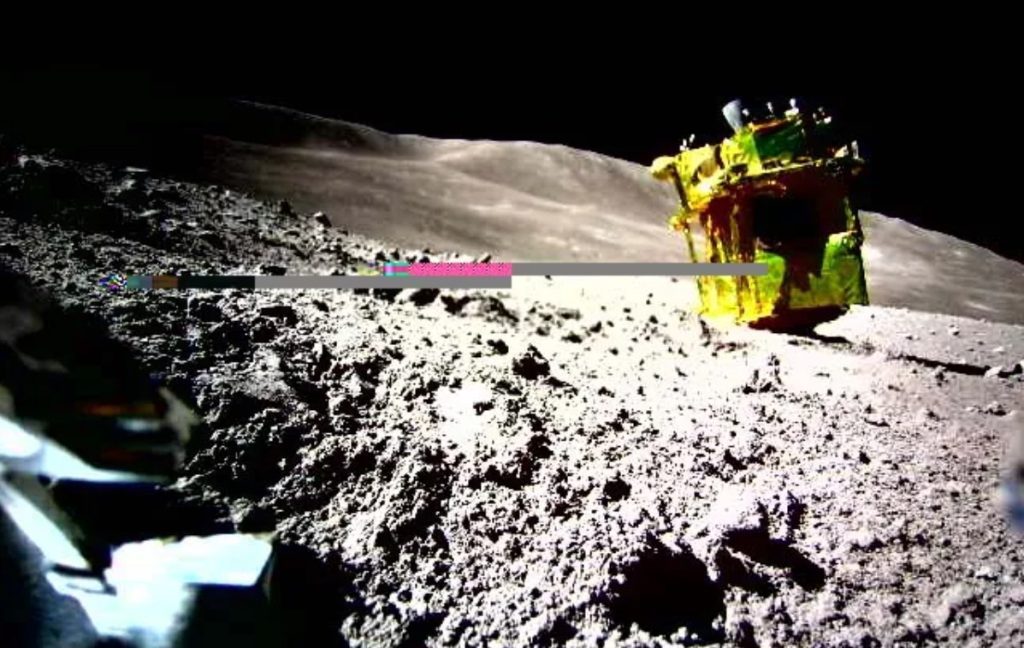Japan has created a multibillion-dollar Space Strategic Fund to help enhance the country’s innovation, autonomy and international competitiveness in space.
In November, Japan’s cabinet approved a bill to establish a $6.7 billion (1 trillion yen), 10-year fund for the Japan Aerospace Exploration Agency (JAXA) with the aim of supporting development, technology demonstration, and commercialization of advanced technologies in the space field. New details were presented in a Space Policy Committee meeting in February, including defining three areas for support: satellites, space exploration and space transportation.
The goals include maintaining independence in space capabilities, strengthening technological superiority, and increasing supply chain autonomy. This is to be achieved by expanding the space-related market, solving global social issues through space technologies, and advancing knowledge and technological capabilities in space exploration. It answers a call in the Space Basic Plan, revised in June 2023, for JAXA to be able to support entities from the commercial and academic worlds.
At home, the move is part of a wider Comprehensive Economic Measures for Completely Overcoming Deflation policy introduced late last year. It also seeks to address international challenges.
“There has been the emergence of many space industry actors, including emerging space countries. The weakness of Japan’s international competitiveness has become evident,” Yui Nakama, a global fellow at the European Space Policy Institute (ESPI), told SpaceNews. “The lack of clear winning strategies against the vigorous space development in the other countries are major drivers.”
“As a national strategy to overcome economic downturns, both [security and civilian] space domains are considered as frontiers where market expansion is anticipated, alongside being crucial areas for national security,” says Nakama.
The strategy aims to enhance JAXA’s capabilities in cutting-edge and fundamental technology development. It will also increase its role in funding technological development across industry, academia, and government sectors. The 10-year plan aims to provide long-term yet flexible and strategic support for private companies and universities to engage in advanced technology development and commercialization efforts in the space sector.
A supplementary budget for the Financial Year 2025 allocates 300 billion yen ($2 billion) to support space technology development. This includes contributions from various ministries, emphasizing a collaborative approach to advancing Japan’s space capabilities.
Detailed plans for implementing the strategy include guidelines on outsourcing and subsidies, focusing on technological development themes that align with Japan’s strategic goals in space. This includes considerations for the maturity of the technology and market, with the aim of fostering innovation and commercial success.
The document also connects with a Space Technology Strategy introduced last year. This includes a technology roadmap for development across security and civilian sectors, according to Nakama.
The strategy aims to create a low-cost space transportation system that can handle various launch needs, including both domestic and foreign satellites. By the early 2030s, it plans to have the ability to launch about 30 institutional and private rockets each year.
Japan’s main H3 rocket had a successful second flight this year after a failed debut in 2023. The goal is to have around 10 launches of the H3 per year by the early 2030s. Private companies Interstellar Technologies and Space ONE are also working on their initial launches. succeeded Interstellar Technologies and Space ONE are aiming for their first launches. The Kairos four-stage light-lift solid rocket from Space ONE is planning to attempt reaching orbit as of March 13 Japan time (late March 12 Eastern). try to go into orbit around March 13 Japan time (late March 12 Eastern)
In 2018, Japan launched six times with its H-2A rocket, but its launch record in recent years has been inconsistent. The plan is to switch to the new H3 rocket, which has faced delays. No launches were conducted in 2022 and only three in 2023, including the unfortunate failure of the first H3 rocket. Japan aims for a significant improvement in its launch performance by the 2030s. failure that caused damage change in fortunes and performance for Japan in a highly competitive launch market
Japan is responding to increasing competition and geopolitical tensions, with a growing sense of urgency to maintain its space superiority in the APAC region. This is especially important in the context of industrial and political rivalry with China, amid the U.S.-China conflict, as stated by Nakama.
Last year, India became the fourth country to successfully land on the moon. It is now focusing on human spaceflight capabilities, establishing a space station, and sending astronauts to the moon by 2040. China is expanding its goals to include deep space exploration and the International Lunar Research Station, as well as diplomatic efforts. It is also supporting commercial space initiatives. Having set a national record in 2023, China aims for approximately 100 orbital launches. land on the moonput astronauts on the moon by 2040 International Lunar Research Stationmaking diplomatic efforts encouraging commercial space development and set a national recordlaunched a national record Japan, on the other hand, landed its SLIM spacecraft on the moon and is participating in the NASA-led Artemis program. Additionally, JAXA and Toyota are collaborating on a pressurized rover for the lunar surface and have the 2026 MMX mission to collect samples from the Martian moon Phobos.Japan's national record for launching 67 times approximately 100 orbital launches successfully landed its SLIM spacecraft on the moon this year.
participating in the NASA-led Artemis program collaborating on a pressurized rover plan to collect samples from the Martian moon Phobos CommunicationAstronomy Spacecraft positioning technology Technology for solar system study and exploration Methods for constructing spacecraft Methods for orbital surveillance
| Exploring the International Space Station and lunar surface | Spacecraft engine technology | Providing services in space |
| Facilities for launching into space and spaceports | Fields of focus under Japan’s Space Strategic Fund in each respective area. | Japan’s Cabinet Office and Space Policy Committee are currently working on the new fund. Basic principles and implementation guidelines will be decided in the next few months. |
| Nakama regards the satellite sector as having potential for market expansion due to demands in industry and national security. Space science and exploration, especially with innovations like crewed pressurized rovers, hold promise for gaining a competitive advantage internationally. However, there are ongoing challenges. | Beyond this, Japan’s Cabinet Office and Space Policy Committee are continuing their work on the new fund. They will make decisions on basic principles and implementation guidelines in the next few months. | Nakama is worried that Japan's space industry might not be able to grow independently of the government by the end of this fund in 2034. Simply giving a lot of money to private companies may not create lasting industrial growth. |
| The future of Japan's space industry and domestic economy relies on whether the private sector can use this 10-year strategic fund to reduce their reliance on government funding and create industry-led space ecosystems, and if government policies support the private sector effectively. | Japan has set up a Space Strategic Fund worth billions of dollars to boost the country's innovation, independence, and international competitiveness in space. | Fundamental technologies |
| Fundamental technology | Transportation services | |
| Launch site/spaceports |
Japan’s Cabinet Office and Space Policy Committee are continuing work related to the new fund. A decision on basic principles and implementation guidelines will follow in the coming months.
Nakama sees the satellite sector as promising for market expansion due to industrial and national security demands. Space science and exploration, particularly with innovations like crewed pressurized rovers, hold promise for competitive advantage internationally. Challenges remain beyond this, however.
“I am concerned about whether Japan’s space industry ecosystem can scale up in a manner that is not dependent on the government by the end of this fund in 2034,” says Nakama. “Simply investing a large amount of funds into potential private actors will not necessarily lead to sustainable industrial development.”
“The future of Japan’s space industry and domestic economy depends on whether the private sector can utilize this 10-year strategic fund as a means to move away from dependence on government funding to establish industry-led space ecosystems, and whether policies align perfectly with the direction of the private sector.”









